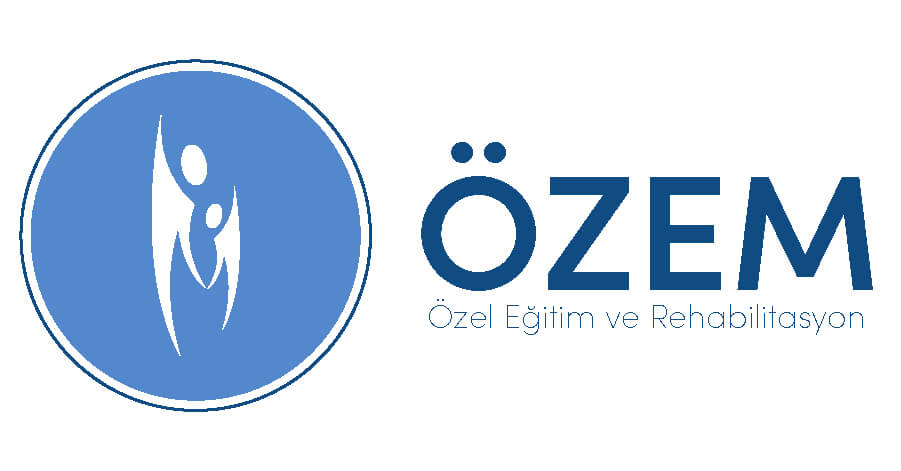Tantrums
Scream, to cry, skid – the signs of a tantrum are often difficult to miss. Tantrums can be difficult to deal with, but these, is a normal part of your toddler's behavior. tantrums: “an emotional outburst of anger and frustration.”
Temper tantrums typically occur 18 It starts at the age of 1 month and terrible twos It reaches its peak during. This, in child development, It is the period when young children begin to assert their independence from their parents.. It is also a period when your child is not learning to manage strong emotions and cannot communicate his feelings clearly.. This combination, It's the perfect storm for tantrums.
Tired, feeling hungry or sick, can make tantrums worse or more frequent. in most cases, tantrums occur less frequently over time. Generally 4 to his age They become much less frequent.
Although every child is different, There are strategies you can try to help calm your child down when he has a tantrum or make tantrums less frequent..
What are the symptoms of a tantrum??
Your child may display one or more of the following behaviors during a tantrum::
Whimper
To cry , shout and scream
kicking and hitting
hold your breath
Push
To bite
Limp
Throwing items
Stretching and roughing up their bodies
What is the best way to respond to a tantrum??
It may help to remember that tantrums are a common part of young children's development, and that your child's tantrums are probably not cause for concern..
Although there is no one-size-fits-all solution, the following strategies can help you manage your child's tantrums.
Calm down
To stay calm Do your best to. if possible, Don't let your child's tantrum interrupt what you're doing and try not to get upset.. This, lets your child know that tantrums are not an effective way to get your attention or get what they want. Wait for some quiet time after the tantrum has passed to discuss your child's behavior.
Ignore the tantrum
If possible, act as if nothing is happening and do not respond to your child's demands.. But kicking or hitting others, Some behaviors should not be ignored, such as throwing objects or screaming for long periods of time, as they may cause damage or injury. In these cases, remove your child from the environment and remove potentially dangerous objects.. Calmly tell your child that their behavior is unacceptable.
Remove your child from the environment
If you are at home and your child cannot calm down, try taking a break. Take them to a quiet area without any safety hazards. Here are some tips for time out:
- Suggested mola time, maximum for each year of the child's age. 5 including minutes 1 is a minute. Well, 2 A typical break for a year-old child 2 is a minute.
- Aim, Your child should calm down and stay in the time-out area until the time-out is over..
- You can try setting a timer to keep track of time. A beep tells your child that timeout has expired.
- If tantrums continue after the break, restart break.
- with older kids, How long will they stay on break? let them decide you can try . Ask your child to come back from time out when he or she feels ready..
If you are in a public place, your child to herself or there is no danger of harming someone else, It's best to ignore the tantrum. The best response in this situation is, It means quitting what you are doing and leaving with your child..
Try distractions
Sometimes it works to offer your child another activity or object, such as a book or toy.. You can also direct their attention to something interesting happening around you.. This, may be enough change to distract them from whatever caused the tantrum.
Acknowledge your child's frustration
Letting your child know that you understand their feelings can sometimes help them calm down.. Even if you disagree with your child's feelings, disappointments you can confirm what you heard .
Try to clearly name the emotion your child is expressing.. This, can help your child learn to identify emotions over time.
Comfort your child
Sometimes your child may just need comfort. This, Doesn't mean giving in to demands. You can try holding your child on your lap and talking to him/her calmly until he/she calms down..
Steps to take after a tantrum
Temper tantrums can be difficult for you and your child. Here are some ways to connect with your child after the event and help them understand your expectations.
Praise your child when he behaves well
Show approval when your child behaves well. These hugs, may include smiles and verbal praise. As well as trying to reduce undesirable behaviors, It is also important to reinforce good behavior.
Create an incentive schedule, “to get dressed” ve “brushing teeth” with routine tasks such as. When a task is completed without a hitch, Add a note to the chart to point out your child's good behavior. put a sticker or check mark.
Don't ignore potentially harmful behavior
A young child occasionally throws things during a tantrum, bite, kicking or It is not uncommon for it to hit. your child, may not yet understand that these may cause pain or harm.
But whenever such destructive behavior occurs, It is important to remove your child from the environment immediately. Tell them clearly and calmly that their behavior is unacceptable. Be consistent whenever possible to help your child learn.
Help your child feel noticed and loved
sometimes kids, throw tantrums because they feel sensitive or do not receive enough attention.
by talking to them, about feelings together by reading books ve sinir krizi geçirmediklerinde onlara çok fazla olumlu ilgi göstererek ihtiyaçlarını anlamaya çalışabilirsiniz.
Formun Üstü
Formun Altı
Öfke nöbetlerini önlemenin en iyi yolu nedir?
Bazen, onları önlemek için elinizden gelenin en iyisini yapmanıza rağmen öfke nöbetleri meydana gelebilir. Ancak aşağıdaki stratejiler, öfke nöbetlerini daha az sıklıkta yapmaya yardımcı olabilir:
- Bir rutin oluşturun. Tutarlı bir rutin veya program , çocuğunuzun ne bekleyeceğini bilmesini sağlar. This, çocuğunuzun gününde farklı aktiviteler arasında geçiş yapmayı kolaylaştırabilir.
- Rol model ol. Çocuklar ebeveynlerine bakar ve davranışlarını sürekli olarak gözlemler. your child öfkenizi ve hayal kırıklığınızı sakince ele aldığınızı görürse , bu duyguları yaşarken davranışınızı taklit etme olasılığı daha yüksektir.
- Çocuğunuza seçenekler verin. Uygun olduğunda çocuğunuza iki veya üç seçenek verin ve bir seçim yapmasına izin verin. Bu onlara, durumları üzerinde bir miktar kontrolleri olduğu hissini verecektir.
- Çocuğunuzun yeterince uyumasına yardımcı olun. This, aşırı yorulmanın neden olduğu öfke nöbetlerini önlemeye yardımcı olacaktır . Çocuğunuzun daha iyi dinlenmesine yardımcı olmak için şekerleme ve yatma zamanı rutinleri oluşturmaya çalışın.
- İyi beslenme alışkanlıklarını teşvik edin. Yeni yürümeye başlayan çocukların “ seçici yeme ” aşamasına sahip olmaları normaldir. Aç hissetmek herkesi sinirlendirebilir ve buna küçük çocuklar da dahildir. Her öğüne sağlıklı yiyecekler eklemek için elinizden gelenin en iyisini yapın ve mümkün olduğunda besin açısından zengin atıştırmalıkları seçin.
- Savaşını seç. Çocuğunuzun giymeyi tercih ettiği kıyafetler gibi küçük şeyler için kavga etmeyin. “Hayır” kelimesini söyleme sayınızı sınırlamaya çalışın.
- Tonunuzu olumlu tutun. Çocuğunuzun bir şey yapmasını istiyorsanız, talepte bulunmak yerine davet etmeye çalışın. Güvenlik söz konusu olduğunda, doğrudan ve sakin olmak en iyisidir.
Her çocuk farklıdır, bu nedenle sizin durumunuzda neyin işe yaradığını bulmak için zaman içinde farklı stratejiler deneyin.
Bir doktorla ne zaman konuşulur
Öfke nöbetleri büyümenin normal bir parçasıdır ve büyük olasılıkla zamanla geçerler. Ancak bazı durumlarda, öfke nöbetleri doktorunuzla konuşmanız için bir nedendir. This, çocuğunuz şunları içerir:
- zamanla kötüleşen öfke nöbetleri var
- sonra düzenli sinir krizi geçirmeye devam ediyor5 yaşGüvenilir Kaynak
- nefesini tutar ve bayılır
- 25 dakikadan uzun süren öfke nöbetleri var
- sinir krizi sırasında kendilerini veya başkasını yaralar
- gelişimsel kilometre taşlarını karşılamıyor olabilir
Nefes tutma normal bir öfke nöbeti belirtisi olsa da, bunu çocuğunuzun doktoruyla tartışmak önemlidir. Nadir durumlarda,gösterebilirGüvenilir Kaynakaltta yatan bir sağlık durumu.
Her çocuk kendi hızında büyür ve gelişir. Ancak belirli beceri ve davranışların genellikle belirli yaşlarda ortaya çıkması beklenir . Thesegelişimsel kilometre taşlarıGüvenilir Kaynakbir doktorun belirli sağlık koşullarını aramasını bilmesine yardımcı olabilir.
Çocuğunuzun gelişimsel dönüm noktalarını karşılayamadığını düşünüyorsanız, doktorunuzla konuşmak en iyisidir. In some cases, öfke nöbetleri gelişimsel gecikmeler or duyusal sorunlarla ilgili it could be .
Çocuğunuzun öfke nöbetleri çocuğunuzla olan ilişkinizi etkiliyorsa veya bununla nasıl başa çıkacağınızdan emin değilseniz, Özem Özel Eğitim Merkezi Psikoloji ve Çocuk Gelişimi biriminden bilgi alabilirsiniz.
Bilgi İçin: 0.531.655.43.38

